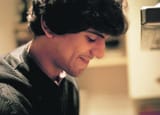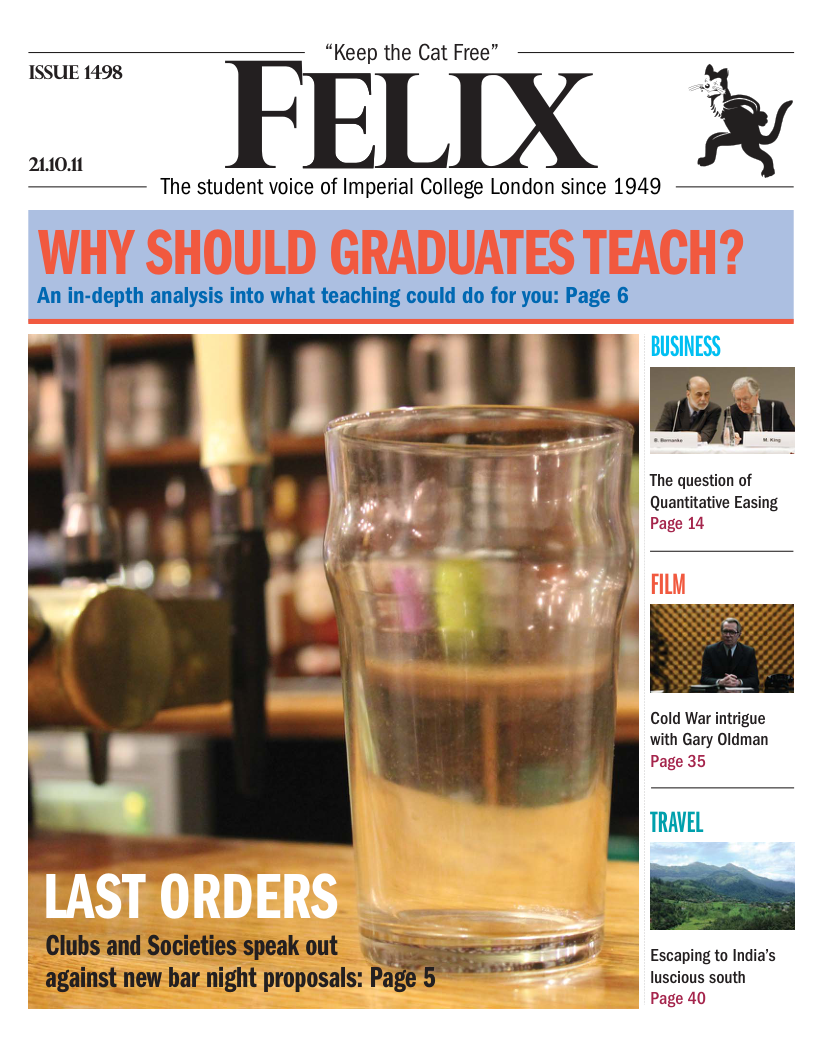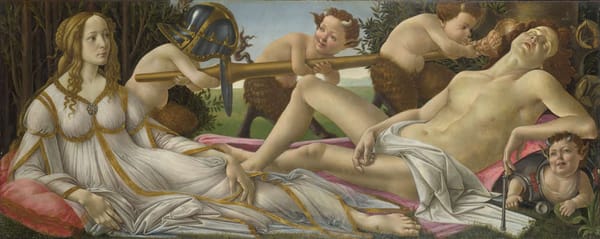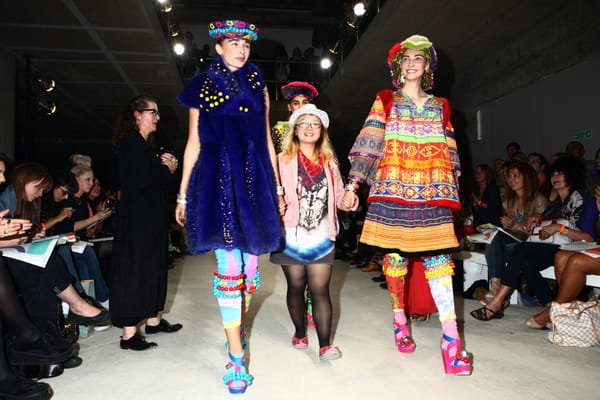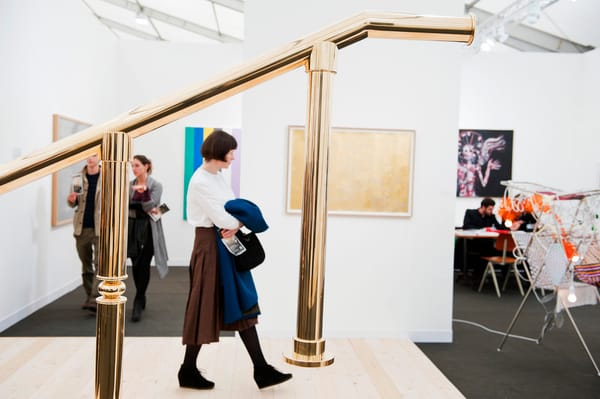A Saturday afternoon in the park
Frieze Art Fair 101: A novice’s impressions
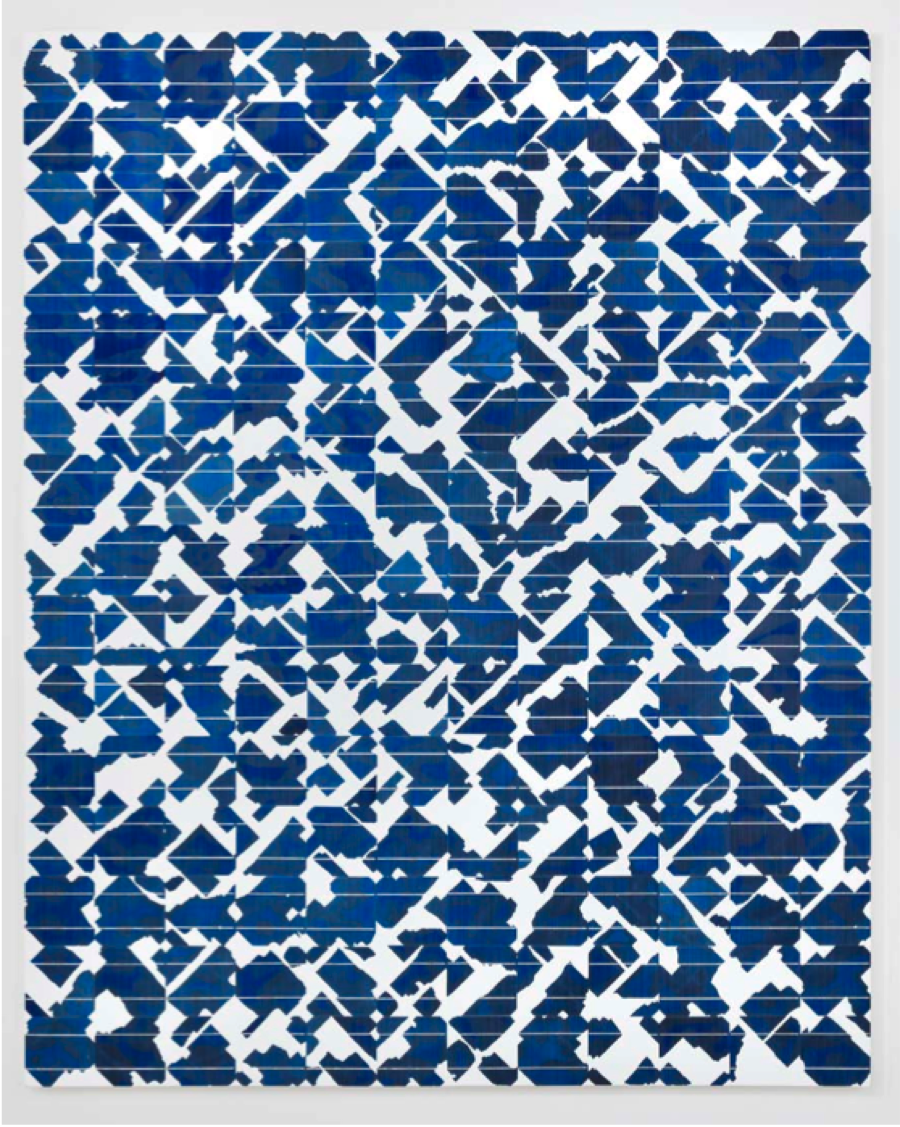
Picture the scene: Regent’s Park on a sunny Saturday afternoon. Families are out, the squirrels are being pretty inquisitive and the pedal boats on the lake are politely bumping into each other. In the middle of it all, a sprawling white structure with a pretty weird wooden entrance, out of which snakes a long queue. Next to it sits the entrance for people who already have tickets - little groups of stylishly dressed (to not use the word arty) people filter into the airy white tent in pretty excited fashion.
Welcome to Frieze Art Fair.
I have slowly been discovering the world of contemporary art over the past couple of years, and trying (but generally failing) to “get” it. I thought that going to Frieze, and seeing how the art world works for myself, might help the process somewhat– it would also be a chance to see the very bleeding edge in contemporary art and see what artists are up to at the moment. If you’re still wondering what it is, Frieze art fair is an annual event that brings together the biggest galleries and collectors in the world to showcase (and sell) the latest contemporary art.
Why is it a big deal?
For starters, it’s pretty big. Walking in, you get an impression of bustle, and a sort of unfocused purpose – everyone is walking around, observing the artworks (and each other), emitting an opinion, taking pictures. In fact, to the layman, that is what sets it apart from any old museum exhibition at first glance: people are snapping away at the things they like, and the interest in some pieces is tangible.
I’m still not sure I ‘get’ contemporary art - but Frieze has made me eager to see more
The sheer size of the place gets to you after a while. Picking up a map at the entrance, it doesn’t seem that big; when you realize that in an hour you’ve only seen 5 galleries out of the 173 presenting work, the fact that it’s set over four days makes sense. The fair is laid out as a series of stands (which cover about 20 square meters on average), all numbered and set up in neat rows. Despite the orderliness, it’s all a bit daunting to the neophyte. Armed with recommendations from your ever-dependable arts editors, I began wandering around.
Describing what I saw would take a catalogue, or rather more simply, a camera. There was so much on display, spanning so many artistic influences, sub-genres and mediums of expression, that it would be impossible to sum it up.
Posters, sculptures, videos, collages…the (in)famous boat (exemplifying “ready-made art”, apparently), the shadow-of-a-banana-that-is-supposed-to-look-like-a-wine-bottle or even a pair of turntables playing random static in a loop were all “art”, and it was all for sale.
I enjoyed it a lot, though. Stepping through the entrance was like entering a parallel world, where the usual rules don’t apply. For contemporary artists, it’s all about capturing an idea, drawing attention to something that is usually overlooked, or seeing something from a different angle. This can lead to the creation of pieces that can either strike a strong chord with the viewer or that just seem very silly. The beauty of an event on the scale of Frieze is that there will almost always be a piece for everyone (check out our favourites on these pages).
I’m still not sure I “get” contemporary art– but Frieze has made me eager to see more.
Personally, one of my favourite pieces was ‘Solar Catastrophe’ by Jennifer Allora and Guillermo Calzadilla a collaborative duo who represented the USA at this year’s Venice biennale. A collage of broken solar cells on canvas, arranged to form a geometric pattern, it was very striking visually but also served as a reminder that while progress has been made, solar panels have been touted as a big source of renewable energy for a while without there having been that much concrete progress.

